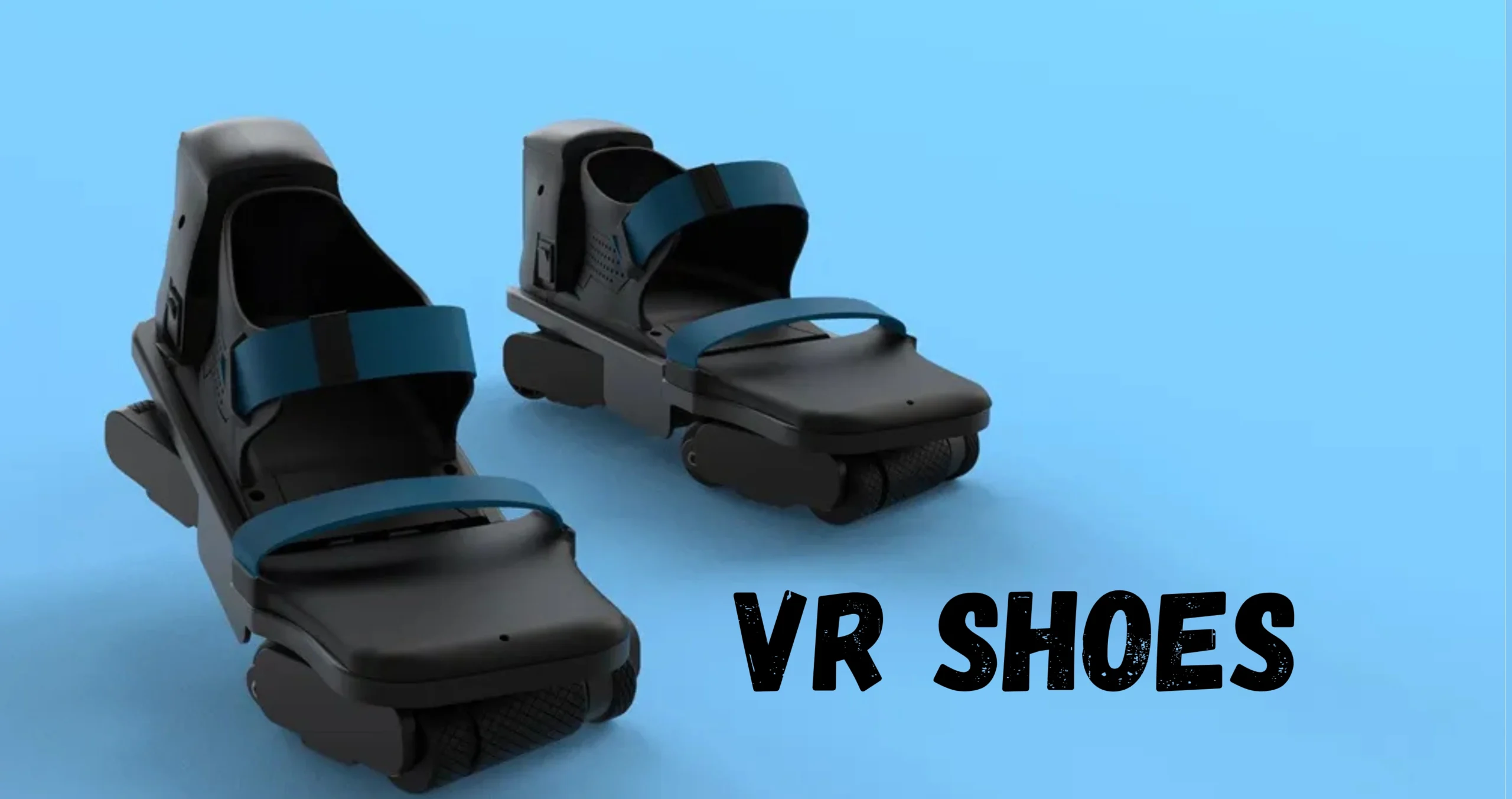The Magic of VR Shoes | Real Movements in Virtual Worlds
Published: 15 Mar 2025
VR feet typically refers to the concept of tracking foot movements in virtual reality (VR), also known as virtual reality shoes, which are specially designed to enhance the experience of using virtual reality.

How Do VR Shoes Work?
VR shoes are built with sensors and technology that detect movements like walking, running, or even jumping and then translate those actions into the virtual environment. With VR shoes, users can feel like they are exploring a virtual world.
They help reduce the need for using hand controllers to move around in VR games or apps. Some VR shoes also provide feedback, like vibrations, to make the experience feel even more realistic. Let’s take a look at their features.
Features of VR Shoes
VR shoes are remarkable devices designed to make virtual reality experiences more immersive and realistic. Here are the key features that make them special:
- Movement Sensors VR shoes are equipped with advanced sensors that detect your physical movements, like walking, running, or even jumping. These movements are then mirrored in the virtual world, allowing for a natural and seamless interaction.
- 360-Degree Motion They enable movement in all directions, giving users the freedom to explore virtual environments fully. Whether you’re turning, sidestepping, or spinning, VR shoes adapt to your actions.
- Surface Feedback Some VR shoes provide haptic feedback to simulate the feeling of different surfaces, like sand, gravel, or grass. This makes the virtual experience feel more lifelike by engaging your sense of touch.
- Slip-Resistant Base Many VR shoes feature a slip-resistant design to ensure user safety while moving on physical floors. This helps reduce the risk of accidents during intense VR sessions.
- Compact and Lightweight Design: Despite their advanced technology, VR shoes are made to be lightweight and comfortable for long periods of use. Their compact size makes them easy to wear and store.
- Wireless Connectivity Most VR shoes connect wirelessly to VR systems, allowing for smooth and hassle-free integration with headsets and controllers.
- Adjustable Fit They often come with adjustable straps or customizable sizes to ensure a secure and snug fit for users of all ages.
- Durable Build VR shoes are built using high-quality materials to withstand regular use and provide long-lasting performance.
Popular VR Shoe Models
Here are some of the most well-known VR shoe models that have gained attention for their innovative features and design:
Cybershoes
- Rating: 4.5/5
- Price: Around $400
Cybershoes are a popular choice for VR enthusiasts. They allow users to walk or run in virtual environments while seated. These shoes are lightweight, easy to use, and compatible with various VR systems.
Taclim VR Shoes
- Rating: 4.5/5
- Price: Estimated between $1,000 and $1,500
Taclim VR shoes are designed to provide haptic feedback, simulating the sensation of walking on different surfaces like sand or water. This feature enhances the realism of virtual experiences.
VRGO Shoes
- Rating: 4/5
- Price: Approximately $300
VRGO shoes are compact and wireless, offering smooth movement tracking. They are ideal for users who want a portable and hassle-free VR experience.
Omni One Shoes
- Rating: 4.7/5
- Price: Around $1,995 (as part of the Omni One VR system)
Part of the Omni One VR system, these shoes are designed for full-body movement. They allow users to walk, run, and jump naturally in virtual environments, making them perfect for gaming and training simulations.
KAT Walk Mini Shoes
- Rating: 4.8/5
- Price: Approximately $3,000 (as part of the KAT Walk Mini system)
These shoes are part of the KAT Walk Mini VR treadmill system. They enable users to move freely in all directions while staying in one place, ensuring safety and immersion.
Etee Shoes
- Rating: 4.2/5
- Price: Around $500
Etee shoes focus on comfort and precision. They are equipped with advanced sensors for accurate movement tracking, making them suitable for both gaming and professional applications.
Conclusion
VR shoes enhance the virtual reality experience by enabling natural movement and realistic interaction. With features like motion sensors, haptic feedback, and wireless connectivity, they make virtual worlds more immersive and engaging.
Perfect for gaming, training, or fitness, VR shoes are shaping the future of VR with their innovative design and functionality.
Check the wireless settings and ensure both devices are on the same network. Restart both for a fresh connection.
Check the wireless settings and ensure both devices are on the same network. Restart both for a fresh connection.
Recalibrate the sensors or update the firmware. Ensure the shoes are securely fitted and aligned.
Check the feedback settings in the app or system. Make sure the shoes are fully charged or connected.
Use a slip-resistant mat or adjust the fit to ensure stability. Check the soles for wear and tear.
Reduce wireless interference by minimizing other devices on the network. Position the receiver close to the shoes.
Optimize usage by turning off unnecessary features like extended feedback. Fully charge the shoes before use.
Check for hardware issues or reset the unresponsive shoe. Pair it again with your VR system.
Wipe them with a damp cloth and avoid harsh chemicals. Regularly inspect for dust or debris in the sensors.
Use protective floor mats to avoid scratches or marks. Ensure the shoes’ base is clean before use.
Adjust the haptic intensity in the settings. Ensure the feedback feature is compatible with your VR app.

- Be Respectful
- Stay Relevant
- Stay Positive
- True Feedback
- Encourage Discussion
- Avoid Spamming
- No Fake News
- Don't Copy-Paste
- No Personal Attacks

- Be Respectful
- Stay Relevant
- Stay Positive
- True Feedback
- Encourage Discussion
- Avoid Spamming
- No Fake News
- Don't Copy-Paste
- No Personal Attacks





